AUTHOR’S NOTE: The following information was first published on December 21, 2014 in “Greenland Theory: Apocalypse Now” (2014), a book and website by David Chase Taylor. Due to its shocking revelations, especially in respect to the CIA in Switzerland, it’s naturally being censored on an international level. Consequently, it is imperative to share this information in order to bring the country of Switzerland and its murderous CIA to justice for centuries of war crimes against humanity.
David Chase Taylor
March 31, 2015
Truther.org
SWITZERLAND, Zurich — Located in central Europe, Switzerland is home to the one and only “Central Intelligence Agency” (CIA). The CIA, which operates under the alias Holy See (i.e., the “Holy C”), was founded 40 years afterConfoederationis Helveticae (i.e., Switzerland), roughly 755 years ago.
By employing deductive reasoning, it can be deduced that Switzerland is in fact home to the CIA. The first step in this process is to follow the money which leads directly to the Bank for International Settlements (BIS) in Basel, Switzerland, an organization which secretly funds the CIA’s nefarious activities.
Switzerland is very unique from every other country on Earth, something expected from a nation which harbors the CIA. Because Switzerland and its CIA are ultimately responsible for engineering the incessant assassinations, terror attacks and wars around the globe, it is naturally free of such mayhem.
In other words, Switzerland is the eye of the global storm—free of financial crises, free of state-sponsored terrorism, and free of war for over 500 years. After all, terrorists working for the CIA need a sanctuary, a place of peace and safety where they can return to after executing black operations around the world.
Said terrorists also need a place where they can avoid prosecution, hence Switzerland’s allegedly neutral position within the international community. This is precisely why the notorious bankers, pirates and terrorists formerly known as theKnights Templar and the Order of Saint John (see below) originally fled to the Alps, founding what is known today as Switzerland.
Because the CIA is in command and control of each country’s respective intelligence agencies and military, they are responsible for engineering the assassinations, terror attacks and wars seen around the world today. This is originally where the concept of the Swiss Army Knife came from for Switzerland has virtually every political and military option at their respective disposal.
Although Switzerland is famous for its mercenaries who were strategically placed by the CIA in foreign armies, courts and governments in order to conduct assassinations and espionage, 99% of Swiss citizens have absolutely no idea that their country is home to the CIA.
SWITZERLAND IS CIA:
1. Switzerland located in central Europe
2. Switzerland only neutral nation on Earth
3. Switzerland only sovereign nation on Earth
4. Switzerland home to Onyx Interception System
5. Switzerland home to Holy See (i.e., the Holy C-I-A)
6. Switzerland home to Bank for International Settlements (BIS)
7. Names for Switzerland (i.e., CH and Suisse) equate to CIA and SS
8. Swiss National Day same date as the anniversary of Temple of Spies
9. Switzerland intimately tied to dictators (e.g., Hitler, Mussolini, Jong-Un, etc.)
10. Switzerland originally founded by the Knights Templar and Order of Saint John
1. CIA Located in Central Europe
It is imperative to note that the notorious CIA of the United States provides the necessary political cover for black operations (i.e., Special Ops) orchestrated by the CIA in Switzerland. In other words, America takes the blame for what Switzerland is ultimately responsible for. Although there are indeed Central Intelligence Agency Headquarters in Langley, Virginia, they are just the local headquarters of the CIA within the United States. In order to sell the world on the notion that the CIA is American in nature, the words “CIA Headquarters” are always followed by “Langley, Virginia” in virtually all Hollywood movies. However, Langley, Virginia is not located in central Virginia, nor is the state of Virginia centrally located within the United States. Switzerland on the other hand is located in central Europe, hence the name “Central Intelligence Agency”. The term central is defined in part by Merriam-Webster as “in the middle of something” or “located in the center of a thing or place”, definitions which are indicative of Switzerland, not Langley, Virginia. The term “central” is also defined in part as “controlling all other parts” and “having power over the other parts”, for the CIA in Switzerland is ultimately in command and control of all 206 countries and territories of the underworld. Although said countries and territories have different flags, languages and races, they all operate at the behest of the CIA in Switzerland.
2. Switzerland Only Neutral Nation on Earth
Switzerland is the only permanently neutral country on Earth. Neutrality is defined in part as “a sovereign state which officially declares itself to be neutral towards the belligerents”. However, if an allegedly sovereign state is funding said belligerents, it is not neutral. Although Switzerland has been neutral since the end of its expansion in 1515, theCongress of Vienna fully re-established Swiss independence in 1815, making Swiss neutrality permanently recognized. Consequently, Switzerland has remained free of terror attacks and war for over 500 years. By remaining neutral, Switzerland can be intimately involved in the day to day business of every country on Earth while publically appearing to be benign. Switzerland is also the only neutral country which actively engages in armed neutrality. Consequently, theSwiss Armed Forces has roughly 200,000 to 400,000 active-duty soldiers, one of the largest standing armies in the world. The armed neutrality of Switzerland only makes sense when it’s understood that Switzerland is home to the CIA. In the event that Switzerland’s political cover is blown and they are fingered as the progenitor of assassinations, terror attacks and war, its military will be able to defend itself again any attack or potential invasion.
3. Switzerland Only Sovereign Nation on Earth
Switzerland is the only sovereign nation on Earth. This relatively unknown fact is confirmed by the flag of Switzerland, one of only two square sovereign-state flags, the other being the flag of Vatican City which is coincidentally protected by the Swiss Guard. While the flags of all other countries (e.g., flag of China, flag of Russia, flag of the United States, etc.) are rectangular in shape, the flags of Switzerland and Vatican City are geometrically square for they represent the only sovereign states on Earth. The term sovereignty is defined as a state or a governing body that has the full right and power to govern itself without any interference from outside sources or bodies. In political theory, sovereignty is a substantive term designating supreme authority over some polity. In other words, Switzerland is the only country in the world (aside from Vatican City) which is in control of its own destiny. Consequently, the other 204 countries and territories of the underworld are not sovereign; meaning that another country (i.e., Switzerland) is ultimately responsible for its fate.
4. Switzerland Home to Onyx Interception System
If Switzerland were in fact a neutral country, it would not be home to the Onyx Interception System which is operated by the Federal Intelligence Service (FIS), the official name for the CIA in Switzerland. Considering that Onyx is admittedly “controlled by an independent [unnamed] control authority composed of members of the federal administration”, it can be deduced that is it under the command and control of the CIA. The stated goal of Onyx is to “monitor both civil and military communications, such as telephone, fax or internet traffic, carried by satellite”, effectively allowing Switzerland to spy on the rest of the world. That being said, it’s highly likely that Onyx is also used as a secure and encrypted means of communication between CIA Headquarters in Switzerland and its respective offices and detention facilities (i.e., black sites) around the world. Despite the fact that Onyx is a global system, the only admitted locations within Switzerland are found in Heimenschwand, Leuk and Zimmerwald. Although the CIA still employs thousands of secret agents around the world, a majority the espionage they conduct is done electronically via state-of-the-art technologies (e.g., cell phones, drones, GPS, internet, satellites, watches, etc.) which are collectively linked to and monitored by Onyx.
5. Switzerland Home to Holy See
The Holy See (i.e., the “Holy C-I-A”) is the official name of the Central Intelligence Agency (CIA), a term evidently derived from Confoederationis Helveticae, an original name for Switzerland. Although the Holy See is allegedly located in Italy, its name suggests otherwise. Consonantly speaking, the term “Holy” (H+L) was evidently derived from the “Hel” (H+L) as in “Helveticae”, while the term “See” (i.e., “C”) is an apparent acronym for “Confoederationis”. Founded roughly 40 years after the establishment of Switzerland in 1300 AD, the Holy See is touted as the ecclesiastical jurisdiction of the Roman Catholic Church. The Holy See is the central point of reference for the Catholic Church and admittedly the focal point of communion due to its prominence. Consequently, the Holy See is viewed as the central government of the Roman Catholic Church. Diplomatically speaking, the Holy See acts and speaks for the whole Catholic Church. In other words, the Holy See is the highest form of government within the Catholic Church, just as the CIA is the highest form of government in the world. Similar to Switzerland, the Holy See is viewed as a sovereign state, having a centralized government entitled the Roman Curia. Coincidentally, the Federal Palace of Switzerland in the Swiss capital of Bern is entitled “Curia Confoederationis Helveticae”, further inferring that Switzerland and the Holy See are in fact one and the same entity. The term “See” found within Holy See was derived from the Latin word “sedes” meaning “seat”, a reference to the Episcopal throne (cathedra) of the Catholic Church. In other words, the Holy See is the “Holy Seat” or the “Holy Throne” of the Greco-Roman Empire in the underworld.
6. Switzerland Home to Bank for International Settlements
The Bank for International Settlements (BIS) in Basel, Switzerland is the financial backbone of the CIA, secretly funding its nefarious operations around the world. Admittedly “the world’s oldest international financial organization”, the BIS funds 60 central banks (e.g., Bank of China, Bank of England, Federal Reserve Bank, etc.), which collectively make up 95% of the world’s GDP (gross domestic product). Although the BIS bills itself as an international organization ofcentral banks which attempts “to foster international cooperation in those areas and to act as a bank for central banks“, it is solely responsible for orchestrating the world’s financial crises simply due to the fact that it alone has the power to create money. In other words, the BIS is responsible for creating and distributing the world’s fiat money supply which is in turn used to fund the world’s respective governments, intelligence agencies and militaries, as well as the assassinations, terror attacks wars they engage in at the behest of the CIA. As the financial wing of the Central Intelligence Agency in Switzerland, the BIS is fiscally responsible for funding virtually all of the armed conflicts witnessed around the world today.
7. Names for Switzerland Equate to CIA & SS
Because Switzerland is home to the Central Intelligence Agency (CIA), their respective names are intimately linked in numerology. According to the International Organization for Standardization (ISO), which is coincidentally located in Switzerland, the country code of Switzerland is CH (i.e., “Chi”), an acronym derived from Confoederationis Helveticae, an original name for Switzerland. When employing Jewish Gematria in respect to the Roman Score (i.e., the Roman alphabet) and/or the modern-English alphabet, the acronym “CH” numerically and consonantly equates to the acronym “CIA”. For example, the numbers/letters found within “CH” (i.e., C=3 and H=11) equate to “311” as the “H” symbol equates to the number “11” in the Roman Score. Conversely, the numbers/letters found within “CIA” (i.e., C=3, I=1, and A=1) numerically equate to “311” as the “I” symbol equates to the number 1 in the Roman Score. Since the letter “A” doubles as a Chevron symbol (i.e., “Ʌ”), the number/letter used to depict the letters “C” and “K” in the Roman Score, the acronym “CIA” equates to “CIɅ”, an acronym which can be depicted in a variety of different ways (i.e., CIC, CIK, KIC, KIK, CIɅ, ɅIC, KIɅ, ɅIK, ɅIɅ, etc.). The double “Ʌ”, “C” and “K” are grammatically and numerological tributes to Chania, Crete, the birthplace of the Greco-Roman Empire which now rules the world via the CIA in Switzerland. This is why the coat of arms of the Holy See (i.e., the official name of the CIA in Roman Catholic Church) depicts two keys or two K’s (i.e., “KK”), for the term “Key” (K) consonantly equates to the letters “C” and “K”, symbolically depicting the name of the CIA (i.e., KIK). Considering that the CIA is predominately staffed by males of Jewish decent, the derogatory term for Jews is “Kike” (C/K+C/K), a term which consonantly equates to “CIA” when the letter “A” is deciphered as a Chevron symbol (i.e., “Ʌ”). Unbeknown to most, Switzerland is also home to the World Jewish Congress, an international federation of Jewish communities and organizations which is curiously never mentioned as an active political body. Whether the World Jewish Congress is part of the CIA is not known, but it’s highly likely considering the secretive nature of the group. One of the original names for Switzerland is Suisse, its current name in French. Consonantly speaking, the term Suisse (S+S) equates to “SS” or “CC” (pronounced “See See”) as the letter “C” routinely doubles as the letter “S” in the English language (e.g., cent, century, citrus, etc.). Consequently, a double “SS” equates to a double “CC” which is, as previously stated, is representative of the CIA (i.e., CIɅ). Historically speaking, the “SS” is found in the names of symbols of various groups which were and are being used by the CIA to kill and terrorize billions of people around the world. For example, the letters “SS” were used by the Schutzstaffel (i.e., SS), the largest and most powerful paramilitary organizations in Hitler’s Third Reich, as well as the Waffen-SS, the multi-national military force of Nazi Germany. Said organizations also donned the Swastika, a symbol which in the letter “S” is superimposed upon another letter “S”, resulting in an “SS”. In modern times, the Swastika is used by the CIA’s neo-Nazi groups around the world. Lastly, similar to the tem Suisse, the name of the state-sponsored terror group ISIS (S+S) contains a double “SS”, a grammatical tribute to the CIA in Switzerland which is using the group to terrorize the world.
8. Swiss National Day is Anniversary of Temple of Spies
Swiss National Day is the birthday/national day of Switzerland, a holiday which is celebrated annually on August 1, marking the foundation of the Swiss Confederacy. Coincidentally, August 1 is also the anniversary of the Temple of Spes (i.e., Spies). Spes (pronounced “ˈspeːs” as in “spies”) was the goddess of Hope in Roman mythology and religion because the Greco-Roman Empire hoped they would find out about potential threats and invasions prior to them manifesting in reality. Because Switzerland and its CIA spy on the underworld on behalf of the Greco-Roman Empire in Greenland, their respective birthday/national holiday is celebrated on the same day as the anniversary of the Temple of Spies. That is why the logo of the Federal Intelligence Service (FIS), which operates under the aliases of theNachrichtendienst des Bundes (NDB), the Service de renseignement de la Confédération (SRC), and the Servizio di Intelligence Federale (SIF), depicts an outline of Switzerland superimposed upon an eye for the FIS is the official name for the CIA in Switzerland. Lastly, in what appears to be a modern tribute to espionage conducted by the state of Switzerland, the logo of Spy Optic sunglasses depicts a Greek Cross which is coincidentally found in the flag of Switzerland.
9. Switzerland Intimately Tied to Dictators
Switzerland is intimately linked, albeit in a de facto manner, to a number of notorious dictators, namely Napoleon Bonaparte, Adolf Hitler, Benito Mussolini, and Kim Jong-un. In the case of Napoleon, Switzerland served as the staging ground for French battles against the Austrians and Russians. Despite being temporarily occupied by French troops, Switzerland was never attacked or invaded by Napoleon’s troops. Although 3.5 million deaths are attributed to Napoleon, Switzerland remained unscathed. Despite the infamous Operation Tannenbaum (i.e., “Operation Christmas Tree”), the allegedly planned but cancelled invasion of Switzerland by Nazi Germany during World War II, Hitler never attacked or invaded Switzerland despite having the country virtually surrounded. Although 7 to 9 million deaths are attributed to Hitler during World War II, Switzerland reportedly only suffered 100 casualties. In 1902, future dictatorBenito Mussolini emigrated to Switzerland where he participated in a series of meetings that organized the communist revolutions and insurrections that later swept through Europe. Similar to his counterpart Hitler, Mussolini never attacked Switzerland despite the fact that it borders Italy to the north. Although 454,600 deaths are attributed to Mussolini during World War II, Switzerland reportedly only suffered 100 casualties.
Why Napoleon, Hitler and Mussolini did not attack or invade Switzerland (the richest country on Earth) while they raped and pillaged Europe only makes sense when it is understood that these dictators were funded and/or groomed by the CIA in Switzerland. Lastly, although North Korean dictator Kim Jong-un is routinely portrayed as mentally unstable, he is under the mind-control of the CIA in Switzerland and acts accordingly. Similar to Mussolini before him, Jong-un lived his “handler” in Switzerland where he was “spotted” a number of times while attending a so-called “private school” where he was likely being groomed for his eventual role as dictator of North Korea. Consequently, any causalities incurred by Jong-un and North Korea are squarely on the shoulders of the CIA in Switzerland.
10. Switzerland Founded by Knights Templar & Order of St. John
The Knights Templar and the Order of Saint John (e.g., the Hospitallers, Knights of Saint John, Knights of Rhodes,Knights Hospitallers, Sovereign Military Order of Malta, etc.) were two medieval Roman Catholic Orders whose merger ultimately spawned the creation of Switzerland around 1300 AD. Consequently, the respective colors and symbols of said Orders are now depicted in the flag of Switzerland. These notorious military Orders routinely engaged is assassinations, piracy, terror attacks and war, traits currently exhibited by the CIA in Switzerland. According to legend, the Order of Saint John wore black surcoats with a white cross during its crusades with the Muslims. However, in 1248,Pope Innocent IV approved a new standard military dress for the Order of Saint John which consisted of a red surcoat emblazoned by a white cross, the exact same color scheme and symbol now depicted in the flag of Switzerland. Interestingly, the flag of Switzerland is now synonymous with neutrality and innocence, an apparent tribute to Pope Innocent IV who sanctified the Order. The Order relocated to Switzerland shortly after the Protestant Reformation (c. 1170) when its leaders in the Margraviate of Brandenburg declared their continued loyalty to the Order of Saint John while publically accepting Protestant theology. The Protestant branches of the Order admittedly spread throughout Europe, including “Hungary, Poland, the Netherlands, Sweden, Finland, Denmark, Switzerland, France, Austria, the United Kingdom, and Italy”. After going undercover in the Alps, “It was established that the [Order of Saint John] should remain neutral in any war between Christian nations”. Since the flag of Switzerland bears the exact same color scheme and symbol as the Order of Saint John, and it’s the only permanently neutral country on Earth, it can be deduced that the Order of St. John became founded what is now known as Switzerland. Similar to the Order of Saint John, the Knights Templar were known for their white mantles with a red cross, a color scheme and symbol now depicted in the logo of the International Red Cross in Geneva, Switzerland, as well as in the flag of Switzerland, albeit the colors are reversed. The notion that the Knights Templar established Switzerland is corroborated by numerousscholars who believe that the “Templars fled into the Swiss Alps”. Since both the Knights Templar and the Order of Saint John admittedly relocated to Switzerland, and the color schemes and symbols of both Orders are evident in the flag of Switzerland, it can be deduced that the country of Switzerland was specifically founded so that these Roman Catholic military orders could fund and orchestrate assassinations, piracy, terror attacks and wars around the world under the guise of neutrality. Due to the wealth the Knights Templar confiscated during their centuries of conquests, the non-combatant members of the Order began to develop a massive economic infrastructure within Europe, creating financial techniques that became the earliest forms of banking, something Switzerland is now famous for. In 1150, the Templars began generating letters of credit for pilgrims traveling to the Holy Land, an innovative arrangement that became the earliest form of banking, leading to the formal system known today as checks. Consequently, the Order of the Knights Templar became the world’s first multinational corporation. Templar involvement in banking grew to the point where they began to practice usury, charging interest on money lent. Templar usury is still evident today in the form of the Bank for International Settlements (BIS) which is located in Basel, Switzerland. In short, the BIS creates money out of thin air and then charges countries (and their respective citizens) interest on said money, keeping the world in a perpetual state of debt and slavery. Since interest rates can always be manipulated, no country can ever escape from their current economic status, regardless of how hard they work.
About the Author
David Chase Taylor is an American journalist and the editor-in-chief of Truther.org, a state-sponsored terror whistle-blower website. Taylor lives in Zurich, Switzerland where he is currently in the process of applying for political asylum since the release of The Nuclear Bible, a book credited with foiling a nuclear terror attack upon Super Bowl XLV in Dallas, Texas on February 6, 2011. Taylor recently authored Greenland Theory: Apocalypse Now, a book and website exposing the true power structure of the world, especially in respect to Greenland and its primary proxy state of Switzerland which is home to the CIA. Taylor has also published The Bio-Terror Bible, a book and website exposing the global bio-terror pandemic planned for 2015. To date, Taylor has blown the whistle on over 100 state-sponsored terror plots, including the 2012 Democratic National Convention Terror Plot, the 2011 Super Bowl Nuclear Terror Plot, the2014 Super Bowl Nuclear Terror Plot, the Terrorgate Scandal, the 2014 Memorial Day Massacre, the man-made asteroid attack planned for 2014, and the drone strike which killed “Fast and Furious” star Paul Walker. Taylor was also the first to expose Alex Jones’ treacherous links to STRATFOR and is noted for the 10 reasons why the Rosetta Comet landing was a hoax.
READ: In the Event of My Death Prior to July 19, 2015—An Open Letter by J...
Truther.org Legal Disclaimer
Truther.org’s stated purpose is to stop terrorism by drawing unwanted global attention to terror plots prior to their fruition. Terror alerts and warnings made by Truther.org DO NOT necessarily imply that these terror events will transpire in reality but rather that there is a distinct possibility that they may occur based on breaking terror-related news, events and data. Historically speaking, once a major false-flag terror plot is exposed, it is immediately canceled, postponed, or reworked (e.g., the 2011 Super Bowl Nuclear Terror Plot, the 2014 Super Bowl Nuclear Terror Plot, the 2014 Freedom Tower Nuclear Terror Plot, etc.). State-sponsored acts of terror must have a prior paper trail in order to set-up patsies, prime scapegoats, create plausible deniability, and mislead the public from the usual suspects of terror which work at the behest of the CIA in Switzerland. Please support real citizen journalism and help make terrorism a thing of the past. Blessed are the Peacemakers. Namaste

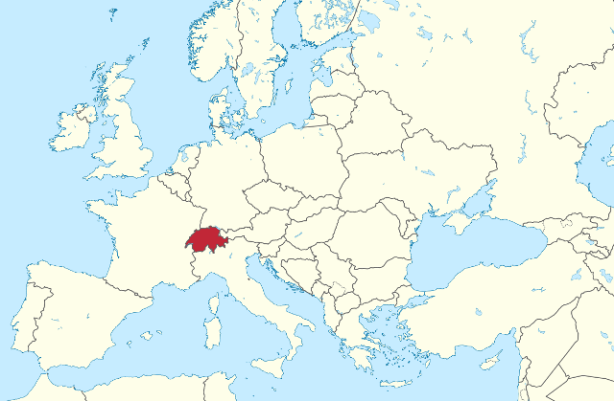
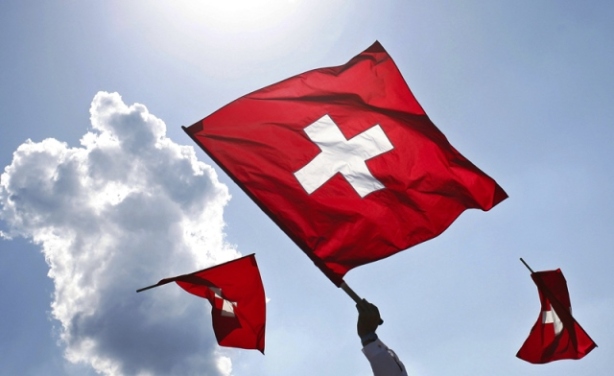

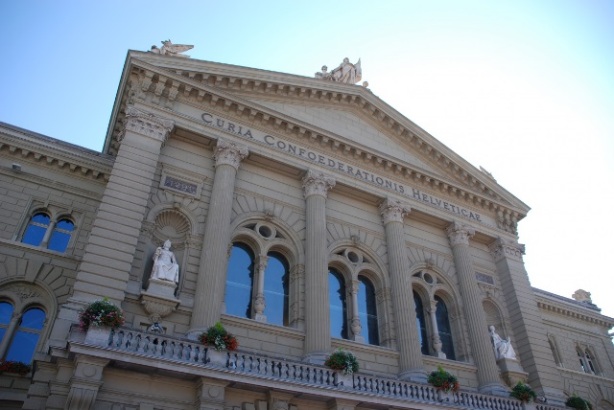
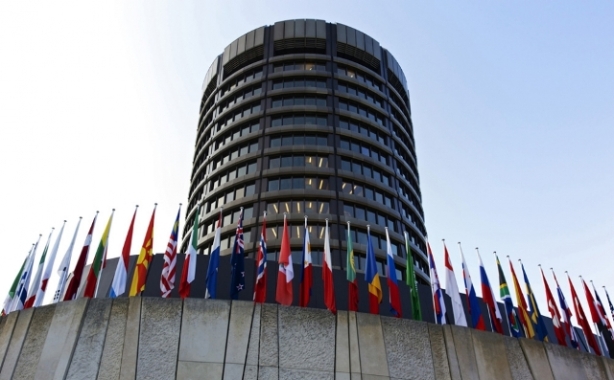
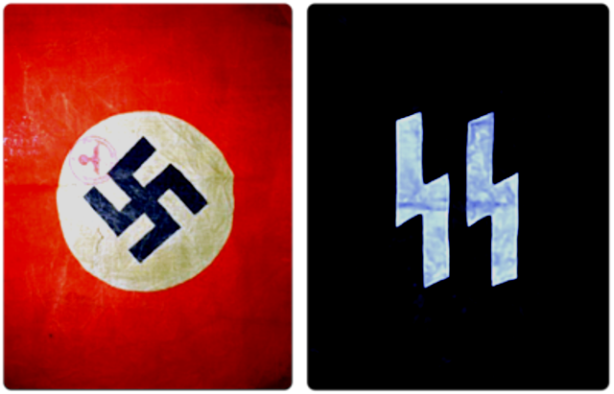

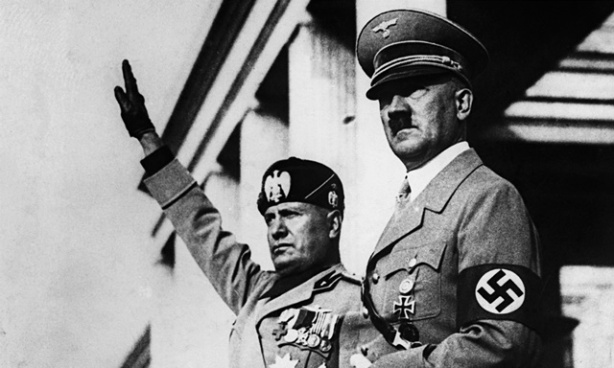





You need to be a member of Saviors Of Earth to add comments!
Join Saviors Of Earth